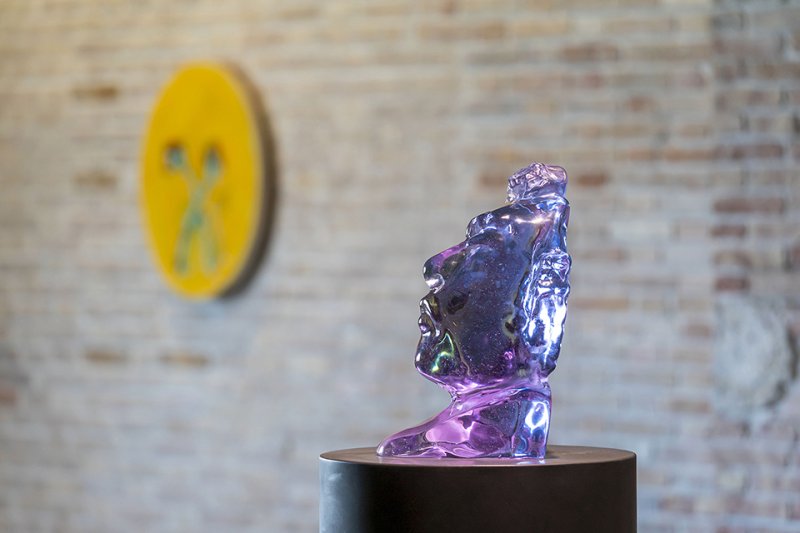[…]
The Head and the Face
As this exhibition illustrates, the head has been the subject of prolonged engagement for Schütte and weaves itself as a motif throughout his repertoire. He has circled back to this subject at different stages in his career, repeatedly reinvestigating it through shifts in expression, character, and material. The heads can be broadly grouped as: single heads, double and conjoined heads, and groupings of heads, with and without attached body, all on a sliding scale of size and in a wide range of materials. In these expressive male heads, we begin to see Schütte’s exploration of the work of earlier artists, including some that have already been mentioned, such as Messerschmidt and Daumier, but also others that I shall propose.
Julian Heynen has stated that: “Almost all of the heads and busts, sometimes arranged into small groups, deal with states of depression and failure.” (17) The heads created in the 1980s, such as Head and Collar (1983), an untitled group of three modelled heads on a pedestal (1985–86), and Man and Woman (1986), display an engaging naïvety, which speaks rather of innocence and modesty than of failure. His only named portrait, of the vanished French sailor Alain Colas (1989), has a comic, astonished expression. His head covering and red bandana lend him an appropriately piratical air, though the gash of red at the throat hints at a more sinister reading. The lumpy textures, unrefined contours, and slapdash polychromy of these heads echo the deliberately naïve work of some of Schütte’s contemporaries: we might think of the roughly hewn, painted wood sculptures produced by Georg Baselitz. A glance at early twentieth-century Expressionist sculpture also offers a surprising link with these early heads of Schütte’s: Oskar Kokoschka’s expressive clay Self Portrait as a Warrior of 1909 sports an alarmed expression similar to that of the Colas portrait. Meanwhile, the rough modelling of the clay and marbled color of the Self Portrait is echoed in Schütte’s larger, glazed ceramic heads, such as the Janus Head, the Vorher-Nachher [Before-After], and the three conjoined heads of Untitled (Dreigestirn) [Untitled (Trio)] (all 1993). The streaked color used on the single and multiple heads mimics the bright glazes of historic German stoneware pottery, as well as the aesthetics of studio ceramics, while Schütte’s use of polychromy follows a historic practice in European sculpture of enhancing sculpted surfaces with paint and gilding which dates back to the Gothic period.
[…]
17. Julian Heynen, James Lingwood, Thomas Schütte, and Angela Vettese, Thomas Schütte (London: Phaidon, 1998), 93.
Excerpts from the catalogue of the exhibition "Thomas Schütte. Genealogies" at Punta della Dogana


